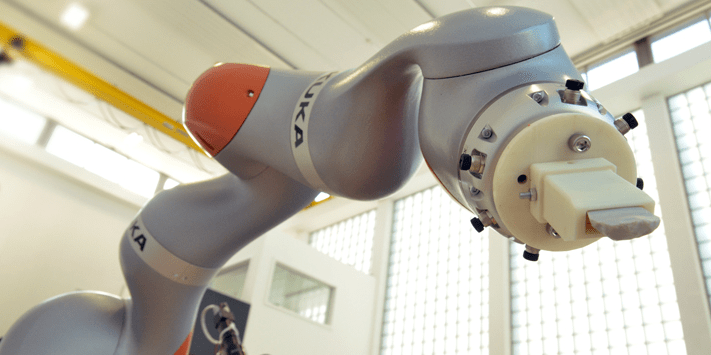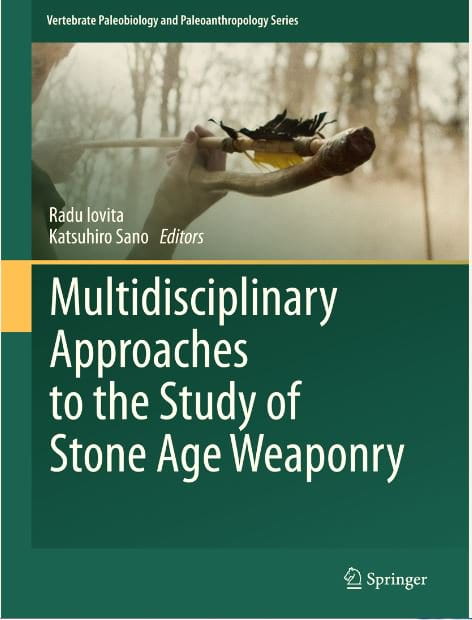Overview
The Anthrotopography Lab at New York University takes advantage of a common methodology (surface analysis) to link two strands of research into the material traces of human action at two fundamentally different scale: the microscopic and the landscape scale.

AI-supported Microscopic Use Wear Analysis
Current projects seek to harness the power of artificial intelligence and computer vision to solve some basic recognition tasks in archaeology. This year, the team led by postdoc Dr. Jing Zhang published a paper detailing our Lithic Use Wear Analysis (LUWA) AI algorithm using over 23,000 microscopic images. The paper was highlighted at the last Computer Vision and Pattern Recognition Conference (CVPR) conference in Seattle. Our results improve on human expert recognition by ca. 20%. We are now working on improving and generalizing these algorithms, as well as developing an AI-aided research infrastructure for archaeologists.

RoboCut: automated experiments for generating use-wear reference collections

This project, in collaboration with Jonas Buchli and his student, Johannes Pfleging, both from the Agile & Dexterous Robotics Laboratory at the ETH Zürich, aims at 1) measuring dynamic parameters in human use-wear experiments [Pfleging et al. 2015], and 2) passing these parameters to a force-impedance controlled robot for automated performance and documentation. Using a KUKA LBR iiwa arm, Johannes and the team were able to get to the finals of the KUKA Innovation Award, and presented at the Hannover Fair. Below you can see a series of links to press releases and articles about this event.
1) Press release: https://www.ethz.ch/en/news-and-events/eth-news/news/2015/04/tracing-human-evolution-with-robots.html
2) Automaton blog: http://spectrum.ieee.org/automaton/robotics/diy/robot-arm-brings-humanity-back-to-the-stone-age
3) VICE Motherboard: https://motherboard.vice.com/read/indiana-robot
Artifact morphology and function, and Paleolithic systematics
Stone technology is different from other technologies familiar to us today, in that it is reductive. I’ve used this concept in a series of papers (see below) to look at quantifying tool and assemblage life-histories and comparing them to identify differences due to functional embedding, diffusion, or migration. I have examined the interplay of production techniques and tool morphology to address independent invention, diffusion, and migration through lithic material for different periods and geographical contexts: the Dabban of North Africa and the Emiran of the Levant [Iovita 2009], the European Middle Paleolithic [Iovita 2008, 2009a, 2010a], and comparing the Acheulian and Middle Paleolithic handaxe concepts [Iovita and McPherron 2011]. A while ago, I analyzed morphological variability in North African Aterian tanged tools, concluding that they were resharpened like side-edge-tools rather than like weapon tips [Iovita 2011].
Neandertal Projectile Technology (NeProTec)
The invention of complex weapons, and especially that of projectiles, is considered to be one of the deciding cultural factors in the successful dispersal of hominins into virtually all ecological zones. However, the point in time when they became widespread is still debated. In order to evaluate the direct evidence for the use of stone tools as projectiles, and building upon earlier experimental work undertaken with colleagues at Penn [Dibble et al., 2005, Rezek et al. 2011], I obtained a two-year grant (titled “The Neandertal Projectile Technology (NeProTech)”) from the German Science Foundation (DFG) to study projectile fracture under controlled conditions.

The project, in cooperation with the German Metrological Institute (PTB), was the most controlled study design to date and involves experimental shooting of exact glass replicas of presumed archaeological projectile points at various speeds and angles into standardized targets made of organic simulants. Through the controlling of most external factors and the subsequent study of the damage under the microscope, we are working toward understanding how ‘diagnostic’ impact damages in both weapons and targets actually form [Iovita et al. 2014]. Thanks to these experiments, we were able to establish minimal criteria for distinguishing spears, javelins, and darts based on secondary fracture characteristics. To put the results of our teamwork in a larger context, I also obtained the funding for and organized an international workshop/ symposium on Stone Age weaponry in Mainz, the proceedings of which were published as an edited volume [Iovita and Sano, 2016] in the Vertebrate Paleobiology and Paleoanthropology Series with Springer Press.
References
Dibble HL, Schurmans UA, Iovita RP, McLaughlin MV (2005) The measurement and interpretation of cortex in lithic assemblages. Am Antiquity 70: 545–560. URL: http://www.jstor.org/stable/40035313
Iovita RP (2008) Ontogenetic scaling in stone tools and its application to European Middle Paleolithic systematics. UMI Dissertations Publishing, 158 p. repository.upenn.edu/dissertations/AAI3328583/
Iovita R (2009a) Ontogenetic scaling and lithic systematics: method and application. J Archaeol Sci 36: 1447–1457. doi:10.1016/j.jas.2009.02.008
Iovita RP (2009b) Reevaluating Connections between the Early Upper Paleolithic of Northeast Africa and the Levant: Technological Differences between the Dabban and the Emiran. In: Shea JJ, Lieberman DE, editors. Transitions in Prehistory: Essays in Honor of Ofer Bar-Yosef. Oakville, CT: Oxbow Books. pp. 125–142.
Iovita R (2010) Comparing stone tool resharpening trajectories with the aid of elliptical Fourier Analysis. In: Lycett SJ, Chauhan PR, editors. New Perspectives on Old Stones: Analytical Approaches to Paleolithic Technologies. New York: Springer. pp. 235–253. doi:10.1007/978-1-4419-6861-6_10
Iovita R, McPherron SP (2011a) The handaxe reloaded: A morphometric reassessment of Acheulian and Middle Paleolithic handaxes. J Hum Evol 61: 61–74. doi:10.1016/j.jhevol. 2011.02.007
Iovita R (2011b) Shape variation in Aterian tanged tools and the origins of projectile technology: a morphometric perspective on stone tool function. PLoS ONE. doi:10.1371/journal.pone. 002902
Iovita R, Schönekeß H, Gaudzinski-Windheuser S, Jäger F (2014) Impact fracture patterns in exact replicas of Levallois points: the first results of a new controlled ballistic experimental protocol. J Archaeol Sci. doi:10.1016/j.jas.2013.01.031
Iovita, R. and K. Sano (Eds.) (2016). Multidisciplinary approaches to the study of Stone Age weaponry, Vertebrate Paleobiology and Paleoanthropology, Springer, Dordrecht.
Pfleging J, Stücheli M, Iovita R, Buchli J (2015) Dynamic Monitoring Reveals Motor Task Characteristics in Prehistoric Technical Gestures. PLoS ONE 10(8): e0134570. doi:10.1371/journal.pone.0134570
Rezek Z, Lin S, Iovita R, Dibble HL (2011) The relative effects of core surface morphology on flake shape and other attributes. J Archaeol Sci: 1–14. doi:10.1016/j.jas.2011.01.014
